|
|
|
| |
| -- 6th to 13th June 2018 -- |
| |
| |
More than 300 miles to reach the
Latvian capital, the equivalent of the Bay of Biscay. Our longest
navigation along a coast, with its traffic, coastlines to keep at a
good distance, and the ensuing many maneuvers. After that, we deserved
a few days break in the largest Art Nouveau city in Europe.
Pictures of the sea, small village and nordic capital, all in our page "Pictures".
|
| |
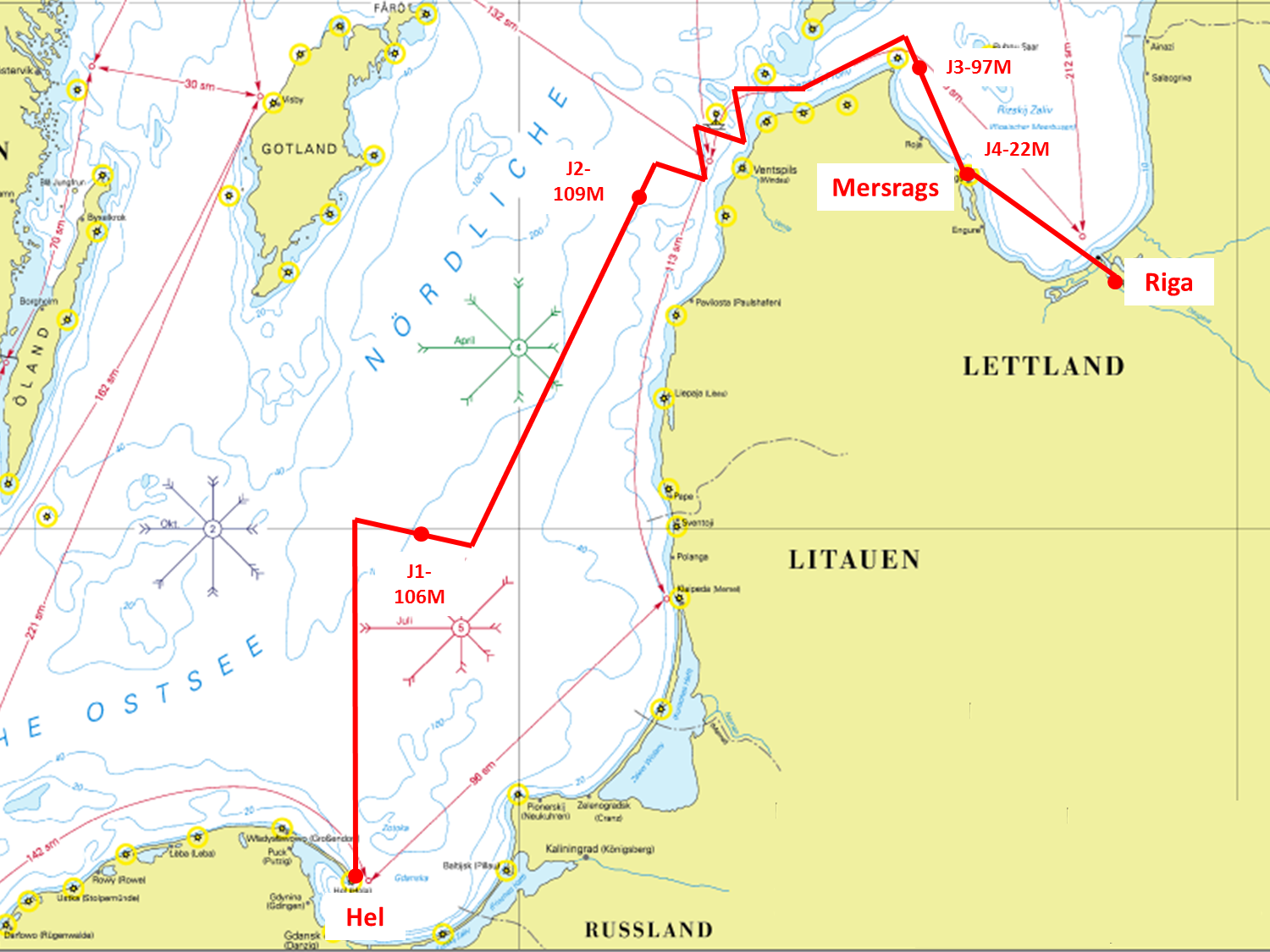
376 miles sailed
1083 miles since the start
|
| |
|
| |
| | |
|
6th – 9th June 2018: Hel – Mersrags (334M) |
| |
| Saltimbanque
is tugging on its mooring lines. The wind, firmly anchored in the
northeast for three weeks, finally seems to be veering to the
south-west. The window is not ideal: a large area to cross first before
reaching our long-awaited goal: wind from the back! Then we should
enjoy a perfect wind for 24h, before 12h of strong wind, and wind in
the face again ... but hey, it should do, let's go! |
| |
Day 1 (109 M). Almost
no wind, we start with 8.5 hours motoring. From time to time, we unfurl
a little genoa with the hope that a light breath of air would inflate
the sails and help Junior a bit. Good time to practice picking up the
plastic waste that floats within our reach. We have a small fishing
netat hand, and there is no fish here anyways... (the Baltic Sea is not
very suitable for fishing from the boat as we usually do, trawling a
line: most species live deeper). The next item we see floating towards
us is a bit too… it is a dead farm animal, a pig or a sheep
probably…yuh, a bit disgusting!
|

Weird floating objects here…. |

And a submarine too |
The wind
finally rises in the evening and we continue our route north along the
Russian waters - taking good care to stay on the right side of the
border! We are not alone: cargo ships, oil rigs, ferries, and even an
American warship rebuking a fisherman on the VHF. |
The
wind increases even more than expected, very quickly raising a messy
choppy sea, rather painful. The dark night is only a distant memory.
The beautiful stars appear for two brief hours before daylight comes
back - this is not that bad when one needs to maneuver actually!
Day 2 (106 M).
The night was much windier and the sea bigger than expected based on
the weather forecast we noted before leaving. If the wind that was
forecasted already strong tonight between Gotland and the Latvian coast
increases in the same proportion, it may become a bit dangerous...
Understanding
the weather in the Baltic Sea is not natural for us. While we are in a
high-pressure environment, isobars often tighten for no obvious reason,
sometimes creating short periods of strong winds. The forecasts
(Swedish, Danish and Passageweather) are generally reliable for 48h.
Beyond that time horizon, it's less certain. The Danes actually display
only 48h on their website. |

Crossing the Latvian border |
Out
of range from the coast, we are trying to get an updated weather report
by calling the passing cargo ships on the VHF - but without success. In
doubt, we decide to delay our progress to the North a bit and get well
behind the strongest of the wind expected there.
Follows a
slower day, but very pleasant, downwind under the sun. We realize that
we have not sailed such a long distance downwind since sailing back
from the Azores. We mostly had the wind against us in the last 5 years
in Europe. This is a calmer rhythm, which allows reading and resting.
Laure begins the audiobook saga "War and Peace" in preparation for our
Russian stop. |
Day 3 (97 M).
In the end, the strongest of the wind passed a bit earlier than
forecasts and the night is quiet. Unfortunately, the northeasterly wind
is also early, and we are back to beating against it, along the coast
by Ventspils’ industrial complex. It takes a few hours for the swell to
adjust to the change of wind, and we enjoy the funny situation to sail
against the wind but surfing on the waves :o) At first sight, the
Latvian coast seems low and sandy, topped with a dense pine forest.
A few sail maneuvers later (Genoa / jib and back), we enter the Strait of Irbe which leads to Rīga Bay.
|

Back to sailing against the wind ...
|
| We are now
almost at 58 ° N, the sun takes forever to set… and then gets up again!
All the "night" the sky will be orange, a fantastic light to accompany
our slow progression (as the wind is slowly dying too) |

The sun sets... almost ... then rises again
|
| Day 4 (22M).
We are now in the huge bay of Rīga, always following the never-ending
forested coastline. Except for the cargo ships and a few ferries we
meet, we did not see a town, a village or a fisherman boat since
passing Ventspils the day before. The wind ends its slow agony and
leaves us with the water flat as a lake ... and the water becomes
completely fresh this time! It smells like a lake and takes the
brownish color of the Dutch inland waters. And yet, we have not passed
any lock, Saltimbanque pushed through continuous waters since the
Caribbean Seas ... |
| After
motoring for a few hours, we decide to call it a day. Better wind is
expected tomorrow, we should rest and wait. The Imray guide indicates a
small harbor offering "all the facilities", called Mersrags. Indeed, we
can make out two wind turbines on the coast as a sign of a human
presence in this endless forest.
|

Entering Mesrags, on the right side of the wind mills
|
|
| |

Mersrags marina, visitor berths
|
The
channel is well buoyed, we reach safely the moles. On our right-hand
side a rusty buoy, then a derrick in the same state at the end of the
starboard mole. On the port side a small fishing boat is wondering if
she is still floating. On the quays huge piles of sawdust and tree
trunks as far as the eye can see. Not a sound (except our engine Junior
who is not very discreet) but a strong smell of wood.
We reach
three rickety pontoons where some sailboats are already moored. 2 to
2.5m of depth, electrical outlet on the shore, water up even further,
wifi is available by the antenna on the other side of the river. The
berth there costs the pretty sum of 25€ a night! (but 100€ only
for a month).We must get used to it: marinas in Latvia and Estonia are
overpriced (never less than 20€, even for a cute 28 feet). The
rest (food etc) is very cheap.
|
| |
Two
men are working on their dry-docked boat and the one who speaks better
English kindly welcomes us, shows us the toilet and shower and insists
- several times – that we visit the shop in town open until 22h. The
other points towards the city - he knows one word of English: "market,
market! ".
Ok, let's go to town! Not much else to do anyway,
as the access to the beach is forbidden (it’s the port area). A small
bridge (and its magnificent concrete disabled-access ramp sponsored by
the European Union) brings us to the main road lined with sand. The
restaurant is in ruins, the houses are in wood with a tin roof, or in
bare concrete. There are a few bigger concrete buildings. The gardens
however are beautifully maintained. And nothing else. We forget about
having a beer at the local pub and look for the famous shop – the only
attraction.
|
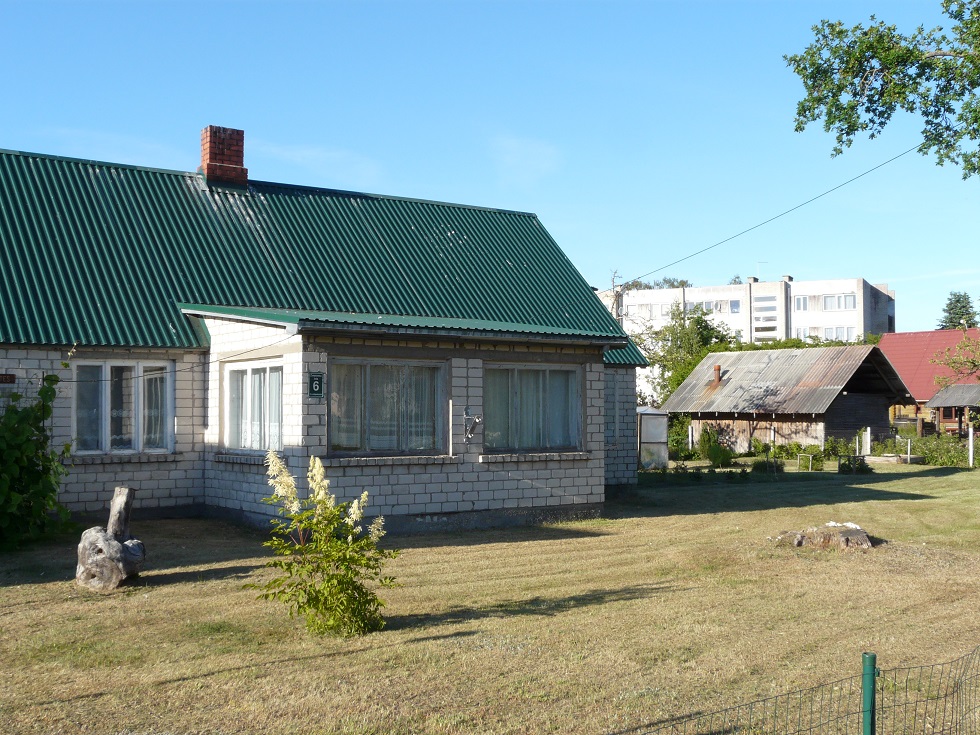
The main street, with dry grass and house of concrete bricks
|
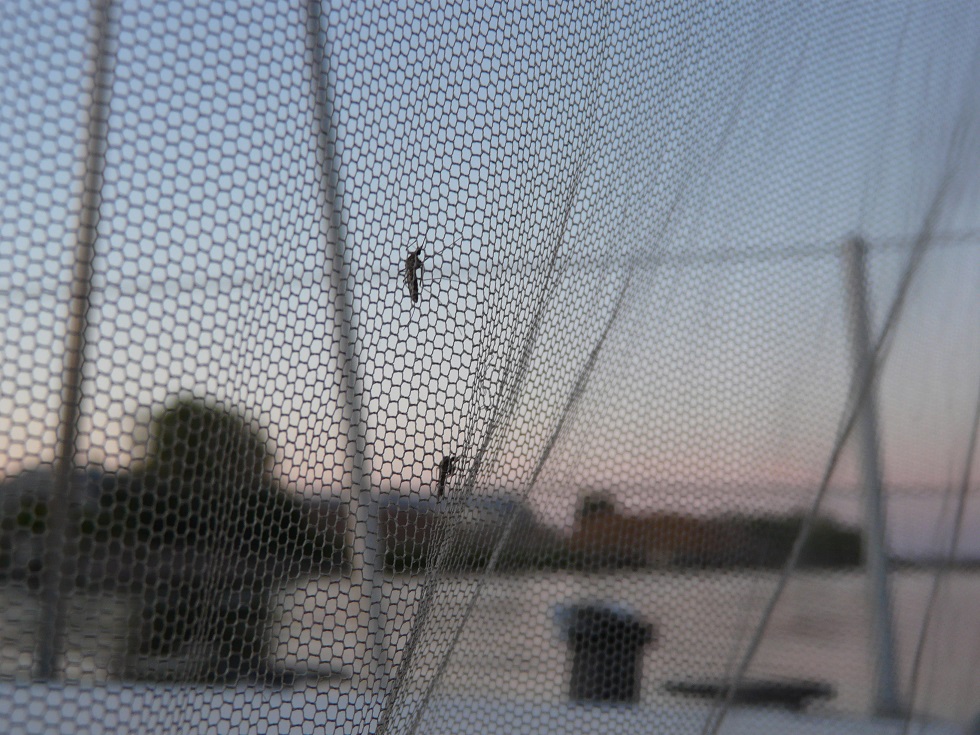
Our mosquito net is getting crowded...
| Back
to the boat, the harbor master hands us a brochure describing 12 local
tourist attractions. The port of course, but also the child playground,
and the magnificent anchor exposed on a rock (same as you can see on
any roundabout in Brittany). These small Latvian ports were developed
and maintained by the USSR, but since 1991 and the country's new order,
economic activity has collapsed. Yachting is seen as a solution, or at
least a hope, to find some income for these communities.
There are few inhabitants in Mersrags, we have probably seen more mosquitoes than humans! |
10th June : Mersrags – Rīga (42 M)
|
| A little
wind is expected early in the morning, so we wake up at 6am local time
(5h in Western Europe), and set the course to Rīga. The sea is very
flat in the bay. A good force 3-4 blowing from the right direction
pushes us at 6 knots on the direct course: bliss! Saltimbanque is so
well balanced in these conditions that it steers itself – we don’t need
to touch the helm! |

Steering with no hand !
|

Slowly (very slowly...) approching the channel of Riga
|
The wind
drops as expected around 1pm, but we made good progress and there is
almost nothing left but the Rīga River to motor up to. It is an 8M
stretch through a huge commercial port, modern and active, before
arriving in the heart of the capital city.
Two
options for the marina: the Andrejosta marina on the same side as the
city center (East), and a brand new marina (almost empty) on the left
bank - that we choose because of its slightly lower cost. 3.5m of depth
at the entrance (do not go near the portside lighthouse – it is very
shallow, as indicated by the water lilies :o)
The price is €
0.75 / foot (or € 21 for us). Minimum service: toilets and mixed
showers in a block on the pontoon, poorly maintained and not very
clean. The staff is usually absent. They operate both marinas and
commute between the two. Water and electricity are there but no wifi or
laundry.
|
| As soon as
we are moored, we set off to discover the old town of Rīga, its old
houses, its small squares that look like Southern Europe under the sun…
In a typical restaurant we celebrate our crossing with local beers and
typical dishes based on meat, potatoes, cabbage and wheat. |
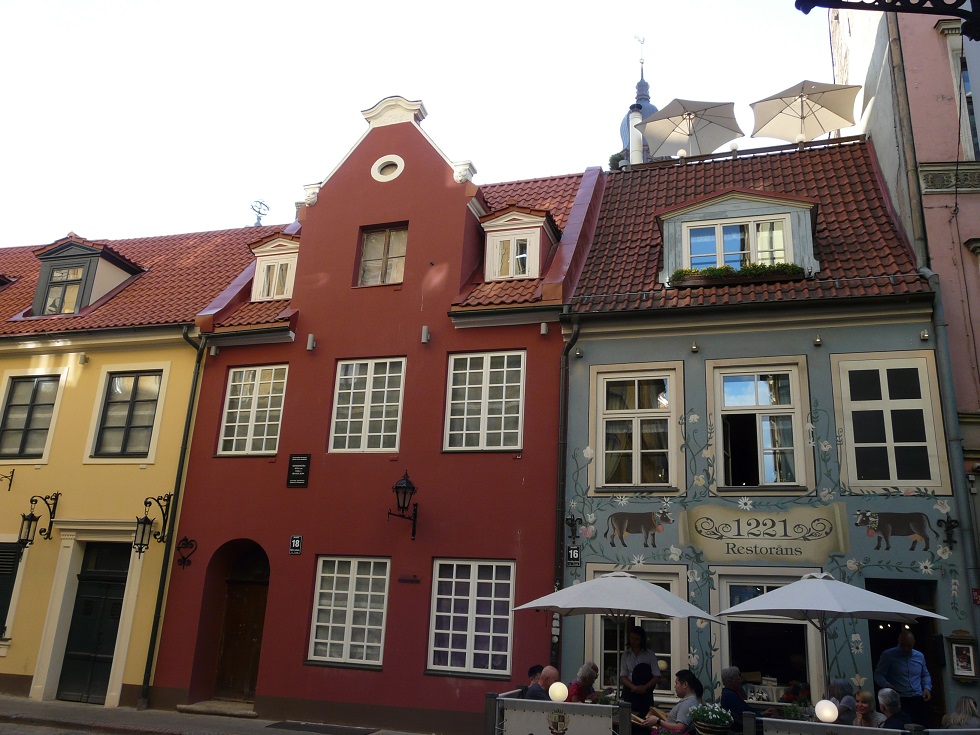
Summer spirit in Riga :o)
|
| 11th – 13th June : visiting Rīga (onshore) |
A little maintenance work is usually required after a long navigation, but Saltimbanque is fine.
Only
the GPS surprised us: it jumped back in time and is showing the 28th
October 1998 as today’s date. Location and time are fine, only the date
is wrong. 1998 is when it was first activated. It had only a limited
number of weeks in memory capacity (1024) and exceeded them – and now
it is starting again from the start. It’s not that bad since the other
functions work well – it makes us feel younger!
So, just some
cleaning, a quick check in the mast, a basic check of the engine which
is going beautifully, and some silicone on small leaks. We also make
small pads to prevent the windvane’s ropes from slowly eating in the
aluminum – and that’s all. The painting outside is a disaster, it
didn’t survive the -18 ° C of last winter and is peeling away
everywhere, we’re a bit ashamed of the state of the deck... This winter
we will have our work cut to repaint all that ! |

Estonian charts, manually updated by the order... a rare item!
|
In the
meanwhile, we are still looking for Estonian maps, which are now
required for our next leg. The marina Andrejosta on the other side is
bigger… maybe they have a ship-chandler? But alas, the wharf is
deserted and there is no one to be seen in the small kiosk that serves
as a harbor office. At the kayak rental place at the end of the quay, a
man looks at us with disbelievingly: “a shop for sailing yachts … this
is a weird idea… sailing yachts are not that common here”… sorry, our
mistake, we thought we were in the main marina of the main city…
In
the end, we called a professional shipping supplier UNIMARS, who
delivers supplies to the big ships in the commercial harbor, and can
import the map from Estonia for us by UPS. We went to pick it up in the
suburbs by bus two days later. All this for a map! And what a
difference between Latvia and the sailing culture in Poland! |
| Groceries
also need to be bought, and luckily more easily available. There is a
huge commercial center just next to our marina – contrast between
sailing life and the shopping paradise in this city of the thousands
shops. We don’t find our beloved pierogis, but their smaller brothers
the “pelmeni” look very appetizing too. The most striking feature is
the dozens of small pastries, sweet and savory, on offer – Latvians
seem to be fond of finger food! | 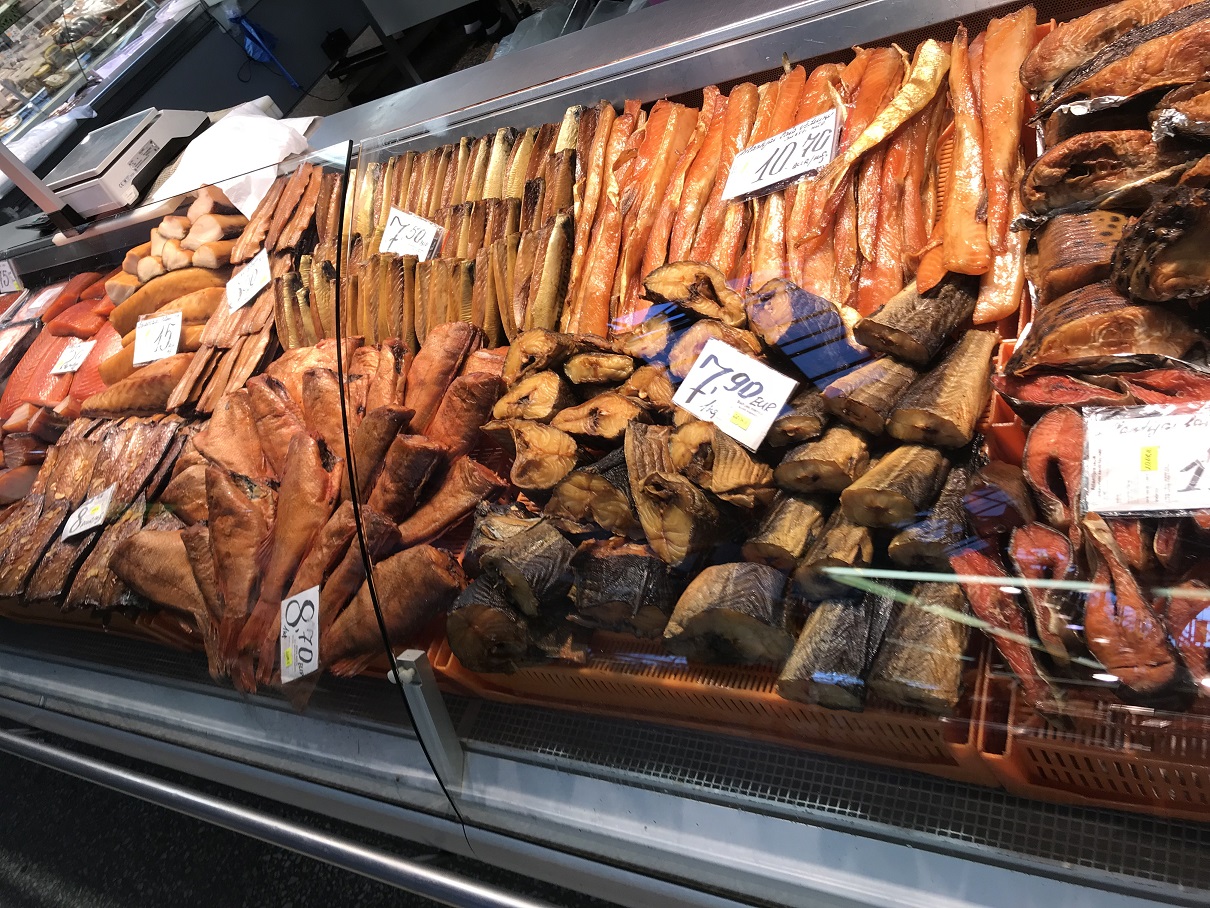
Smoked fish of any kind, quite common since Poland
|
| We
also visit the city. Founded in 1201 by a German merchant and / or the
missionary Saint Albert, Rīga quickly became a member of the famous
Hanseatic League. Then in 1710 the country gets absorbed into the
Russian empire. From those times dates back the current “old city”,
miraculously spared by the Second World War and with its beautifully
restaured buildings. |

Riga old town, Liva Laukums
|
At the
beginning of the 20th century, Rīga is the third largest city in the
tsarist empire and the demolition of its old walls allows the
construction of new buildings. The architects are having a blast,
making the streets of Rīga a real museum of Art Nouveau. In the space
of no more than 12 years, dozens of buildings are erected along a few
large arteries, instead of the traditional wooden two-story houses.
|
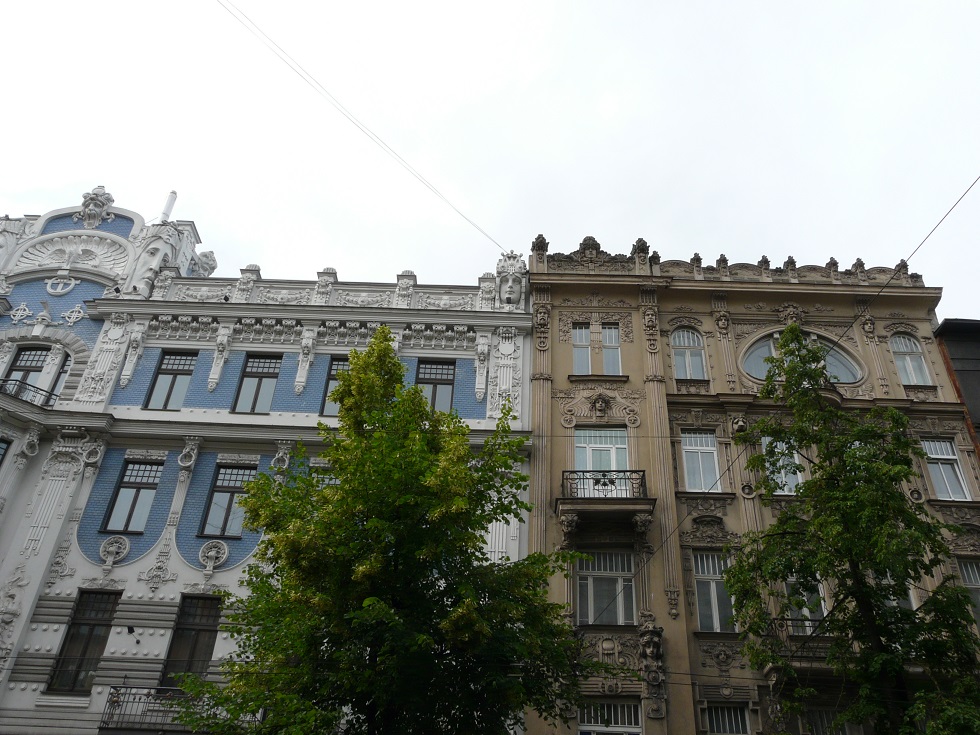
An explosion of "Art-Nouveau" in Riga
|
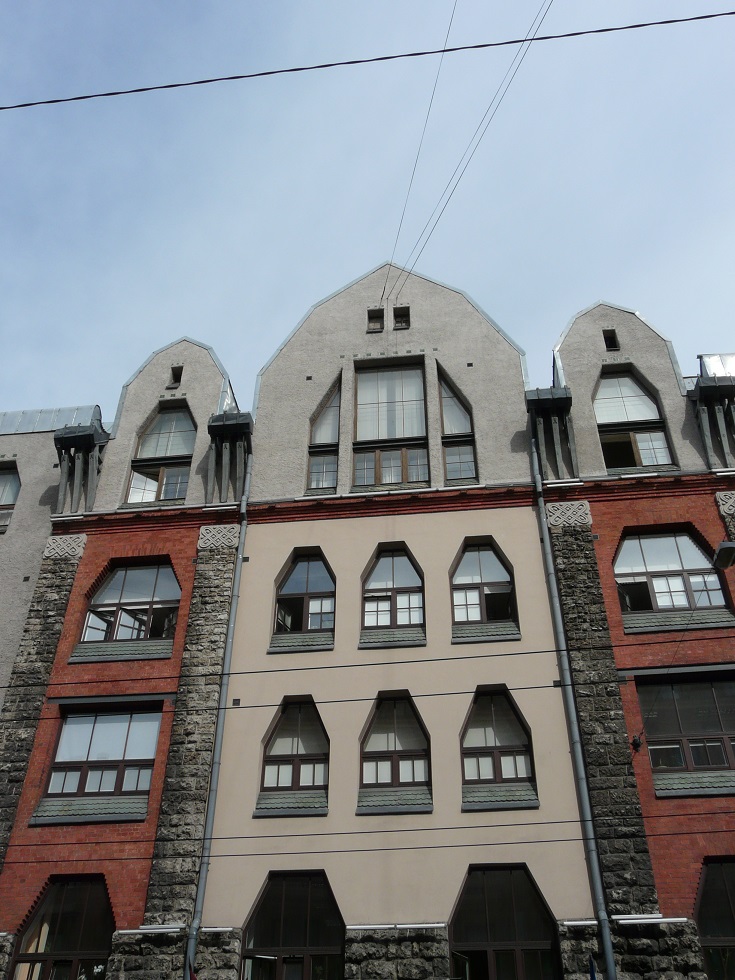
In an other style, also "nouveau"
| 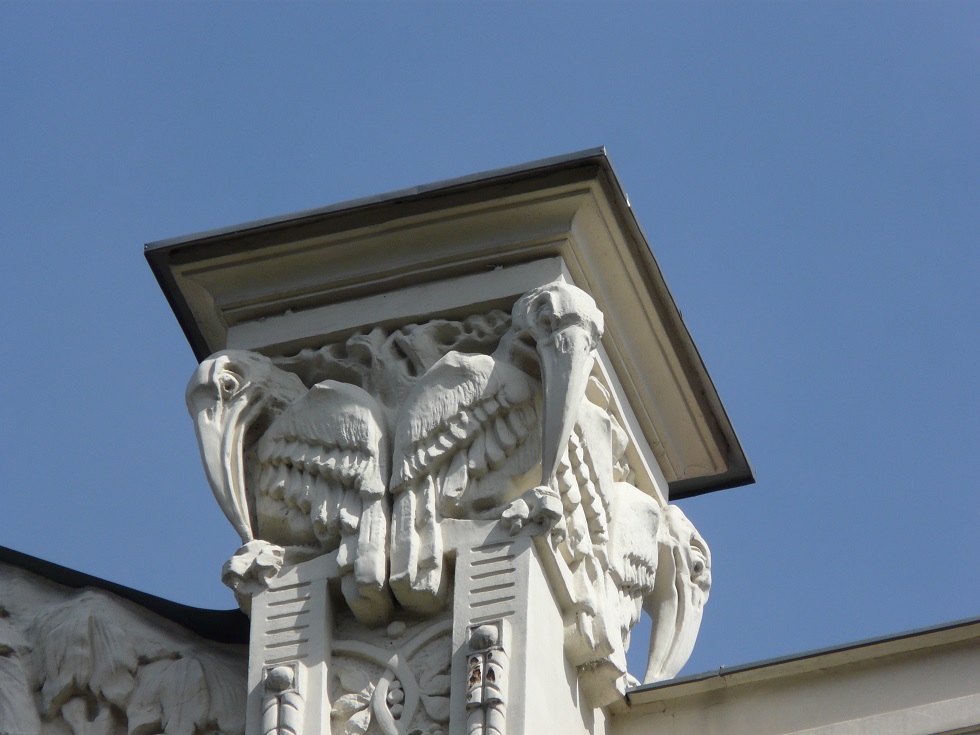
With nasty looking toucans
|
At the end
of the First World War, Latvia becomes independent at last. But through
the Germany-Soviet pact it falls back in the hands of the USSR in 1940.
A year of terrible repression of the population by the communist
government ensued (as we learn by visiting the KGB museum in its
original gloomy corner house). Then invaded by the Nazis for a few
years, then “liberated” by the Soviets again, until 1991.
A
photo exhibition on "Our Countryside" at the Latvian Art Museum shows a
little girl in a blouse next to her grandmother, in a farm with a
single room with dirt floor. The photo could have been taken in the
1950s in a French countryside. Looking at the date, we realize that the
little girl must be two years older than us, the photo dates from 1987.
And yet, today’s Rīga is building skyscrapers of glass and steel ... |
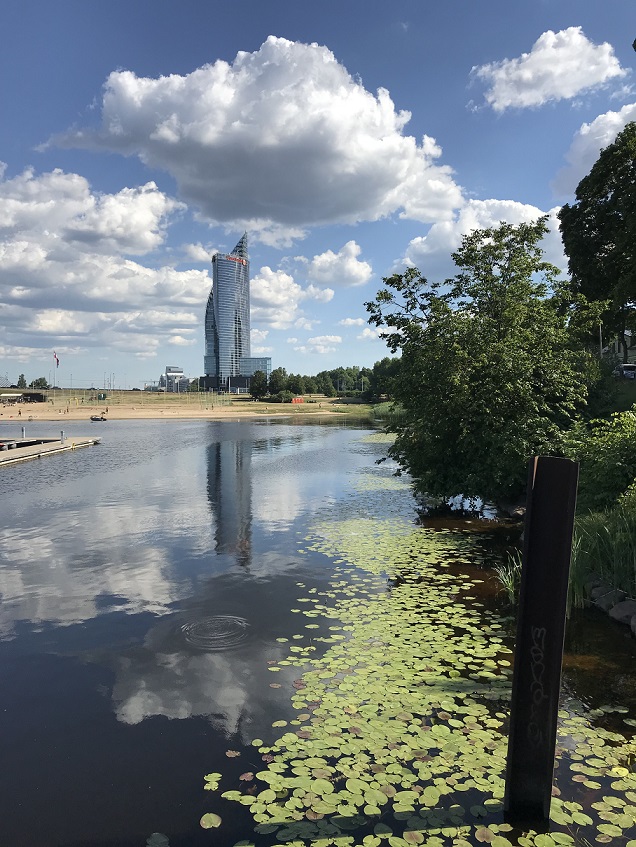
Nature and modernity...
|
A beautiful Allures 45
yacht comes into the marina, which we had already seen at Kolberg.
Onboard live a friendly English couple, who have gone into early
retirement, sold their house and set sails on their "L'escale".
It’s
all nice and well in the big city, but we’re starting to feel a bit
claustrophobic. We want a little less culture and a little more nature.
And sailing! So it's time to open our beautiful newly acquired maps and
see what these small Estonian islands look like...
|
| |
|
|
|
|
|
| |
| |
| |
| TOP
|
| |
| |
| |
| |
|










